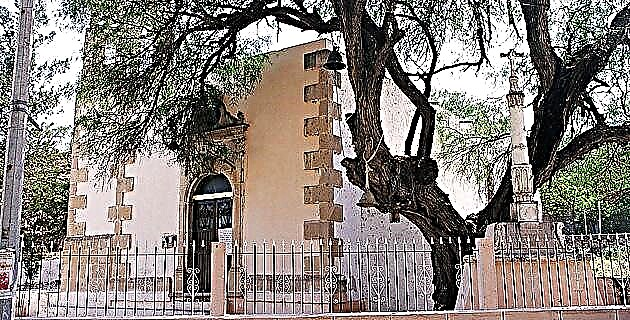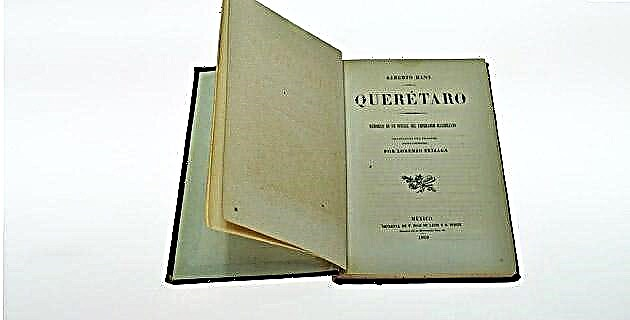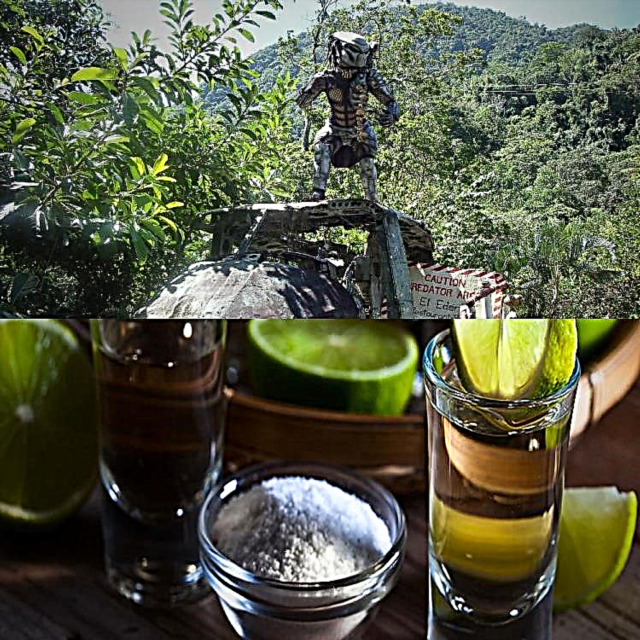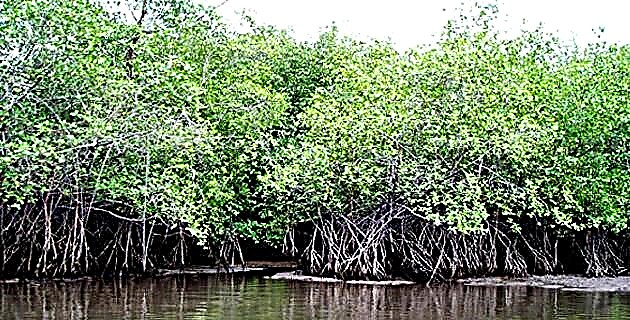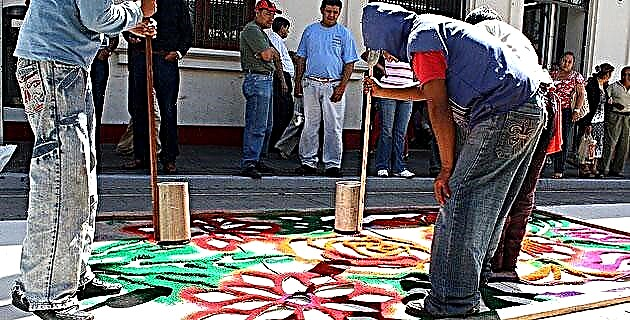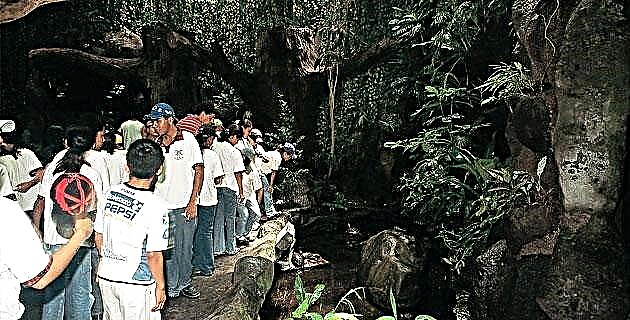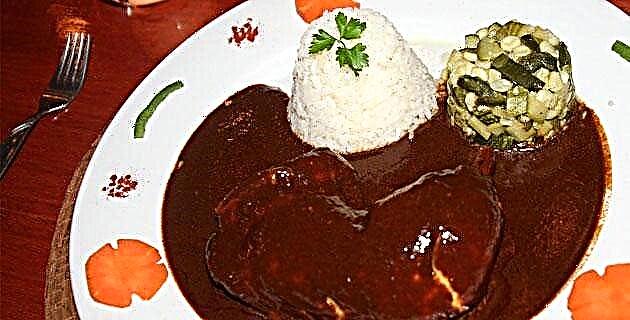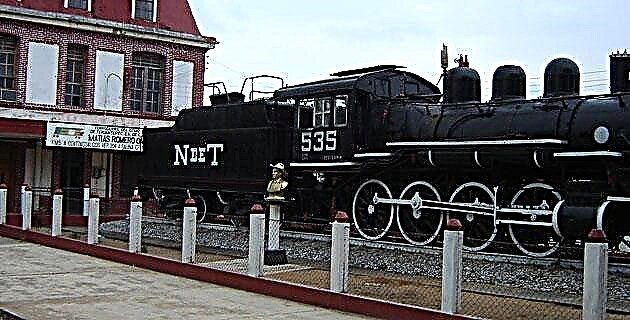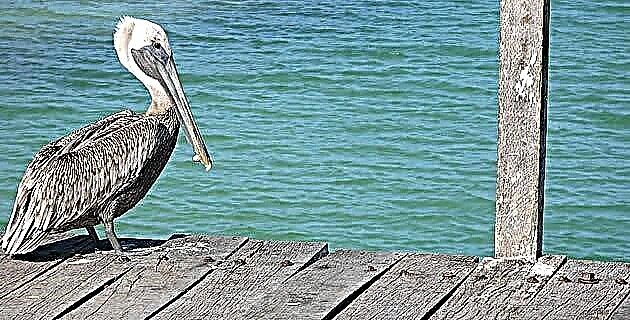
In the eastern part of the state of Quintana Roo, 12 km south of the Tulum fort, an important archaeological and tourist area on the Mexican Caribbean coast, the Sian Ka'an Biosphere Reserve is located, one of the largest of the country and the second largest in the Yucatan peninsula.
Sian Ka’an covers an area of 582 thousand hectares in which there are terrestrial habitats, such as tropical forests and wetlands, and marine habitats, such as the second great barrier reef in the world (the first is in Australia).
The wetlands, which are made up of savannas, swamps, swamps, tasistales (a community of tasiste palm that grows in coastal lagoons), coastal dunes and mangroves, occupy approximately two thirds of the surface of the Reserve and constitute a fundamental site for food and reproduction of shorebirds.
In this area are the bay of Ascención, to the north, and that of Espíritu Santo, to the south; both made up of keys, islands and coastal lagoons that are home to a great diversity of birds: more than 328 different species, many of them characteristic of the coasts, of which 86 species are seabirds, ducks, herons, storks and sandpipers.
During four days we toured the Bay of the Ascención to visit the Gaytanes, Xhobón and the cays nesting colonies, as well as several feeding sites.
North of the bay, through the coastal lagoon known as El Río, we walked through two breeding colonies. Upon our arrival at the islets, multiple silhouettes and peaks of various sizes and shapes, yellow legs, beautiful plumage, and countless restless squawks welcomed us.
Brown pelicans (Pelecanus occidentalis), pink or chocolate spoonbills (Platalea ajaja), white ibises or cocopathians (Eudocimus albus) and different species of herons inhabit these places, where you can see birds of different ages: chickens, fledglings and juveniles, all of them crying out for food from their parents.
To the south, we were in the La Glorieta feeding area. There, plovers, storks and herons form a mosaic of dancing silhouettes, creatures that move through the wetlands feeding on mollusks, crustaceans, insects, fish and amphibians.
In general, shorebirds are divided into three groups: aquatic, shore and marine, according to the habitats they frequent and the adaptations they present to living in these environments. However, they all reproduce on land, which makes them vulnerable to human disturbances.
Waterfowl are the predominant group in the coastal environments of Sian Ka’an; They usually feed on fresh and brackish water bodies and in the line of aquatic birds in this area, they are represented by divers (Podicipedidae), anhingas (Anhingidae), herons and herons (Ardeidae and Cochleariidae), ibis (Threskiornitidae), storks (Ciconnidae), flamingos (Phoenicoteridae), ducks (Anatidae), rallids (rallidae), caraos (Aramidae), and kingfishers (Alcedinidae).
Migratory birds such as ducks and divers are seen in shallow bodies of water and their food is aquatic vegetation and microorganisms; on the other hand, wading birds such as herons, storks, flamingos and ibises feed on shallow bodies of water.
Worldwide, the group of shorebirds is made up of twelve families, which are related to wetland environments, mainly coastal and that feed on invertebrate microorganisms in beaches, silts, marshes, waters of a few centimeters deep, and in the area Intertidal of the oceans (area delimited by high and low tides). A large number of these species are highly migratory and include transequatorial movements.
In this Quintana Roo Reserve, shorebirds are represented by jacanas (Jacanidae), avocets (Recurvirostridae), oystercatchers (Haematopodidae), plovers (Charadriidae) and sandpipers (Scolopacidae). Only four species of shorebirds breed in Sian Ka’an, while the rest are wintering migrants or passing migrants.
The migrants depend on the availability and seasonal abundance of the resources they consume along their migratory routes. Some species use a lot of energy during their long trips, and even lose approximately half of their body weight, so they need to recover in a short time that energy lost in the last stage of the flight. Thus, the wetlands of the Reserve are a very important place of passage for migratory shorebirds.
Seabirds are various groups that depend on the sea for their food, and have physiological adaptations to live in an environment of high salinity. All the seabirds in Sian Ka’an feed on fish (ichthyophages), which they obtain in shallow waters near the coast.
The groups of these birds that can be found in the Reserve are pelicans (Pelecanidae), boobies (Sulidae), cormorants or camachos (Phalacrocoracidae), anhingas (Anhingidae), frigate birds or frigate birds (Fregatidae), seagulls, terns and skimmers. (Lariidae) and manure (Stercorariidae).
From the town of Felipe Carrillo Puerto it took us five hours to reach the Punta Herrero lighthouse, the entrance site to the Bay of Espíritu Santo. During the tour we stopped to see a pair of bidentate kites (Harpagus bientatus), several common chachalacas (Ortalis vetula), tiger herons (Tigrisoma mexicanum), caraos (Aramus guarauna), and a great variety of pigeons, parrots and parakeets, and songbirds.
In this bay, although it is smaller than that of Ascension, the bird colonies are hidden between peninsulas and shallow waters. This makes access to these colonies a bit difficult and in some sections we had to push the boat.
In this area there are several nests of osprey (Pandion haliaetus) that, as its name implies, feeds on fish obtained with an impressive technique. Another nesting species is the horned owl (Bubo virginianus) that eats some aquatic birds that inhabit the colonies.
Most of the waterfowl species are residents that breed in Sian Ka’an, and almost always share islands and islets with seabirds. The shorebird colonies in this place number about 25, of which fourteen are in the Ascension and eleven in the Holy Spirit. These colonies can be made up of one species (monospecific) or up to fifteen different ones (mixed colonies); in the Reserve the majority are mixed colonies.
The birds nest in mangroves or small islands called "mogotes"; the reproductive substrate can be found from near the water level to the top of the mangrove. These islands are removed from the mainland and from human settlements. The height of the vegetation of the mogotes fluctuates between three and ten meters, and is mostly made up of red mangrove (Rizophora mangle).
The species do not nest randomly with respect to the vegetation, but the spatial distribution pattern of the nests will depend on the nesting species: their preference for certain branches, heights, edge or interior of the vegetation.
In each colony there is a distribution of the substrate and nesting time of the species. The larger the size of the bird, the distance between the nests of individuals and species will also be greater.
In terms of feeding, coastal birds coexist by dividing their feeding habits into four dimensions: type of prey, use of forage tactics, habitats to obtain their food and hours of the day.
Herons can be a good example. The reddish heron (Egretta rufescens) feeds solitary in brackish water bodies, while the snow heron (Egretta thula) obtains its food in groups, in fresh water bodies and uses different forage tactics. The spoon-heron (Cochlearius cochlearius) and night-herons coroniclara (Nycticorax violaceus) and black-crowned (Nycticorax nycticorax) forage preferentially at night and have large eyes for better night vision.
In the Sian Ka’an Biosphere Reserve, not everything is life and color in birds. They must face various predators such as birds of prey, snakes and crocodiles.
It is with sadness that I remember an occasion when we visited a breeding island of the least swallow (Sterna antillarum), a species threatened with extinction, in the Bay of Espiritu Santo. As we approached the small island of barely 4 m in diameter, we did not see any birds fly when we approached.
We got off the boat and surprised we realized that there was no one. We could not believe it, since 25 days before we had been in that place and we had found twelve nests with eggs, which were hatched by their parents. But our surprise was even greater when we found the remains of the birds in what were their nests. Apparently, silent and relentless nocturnal death fell on these tiny and fragile birds.
It was not possible for this to happen exactly on June 5, World Environment Day. It was not a bird of prey, perhaps some mammal or reptile; however, the doubt persisted and without words we left the island to go to the end of our work.
The wetlands of the Caribbean region appear to be the most threatened in all of Central and South America, despite being among the least known environments.
The damage that the Caribbean is suffering is due to the density of the human population in the area and the pressure it is exerting on the wetlands. This implies a direct threat to resident birds that depend on wetlands all year round, both for reproduction and food, and for migratory birds whose success depends largely on the availability of food in the wetlands of the Caribbean region. .
Preserving and respecting this space is of vital importance for these living beings that accompany us in this short time of existence.

